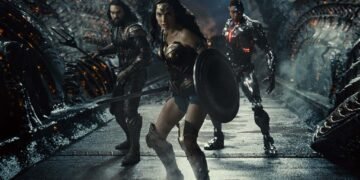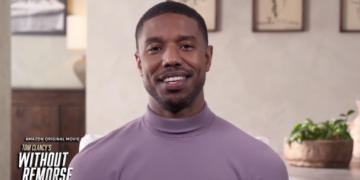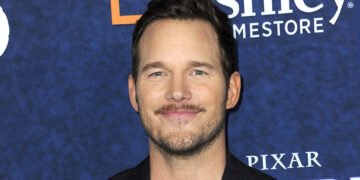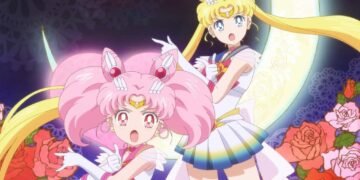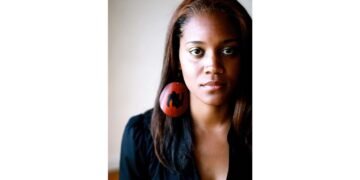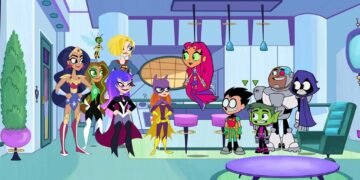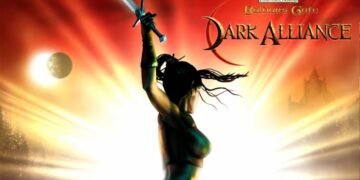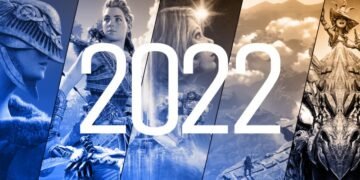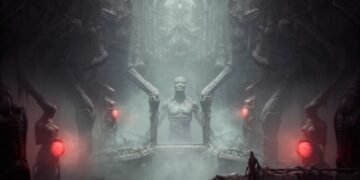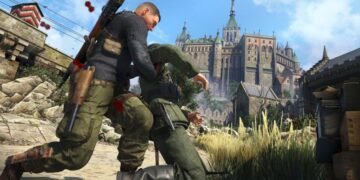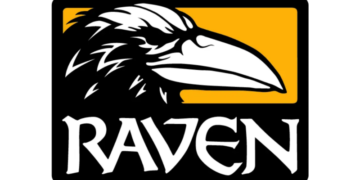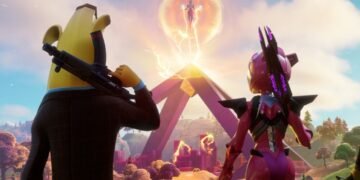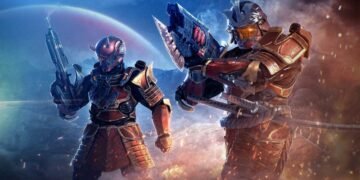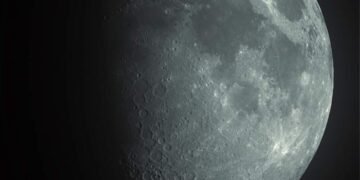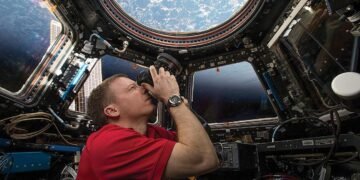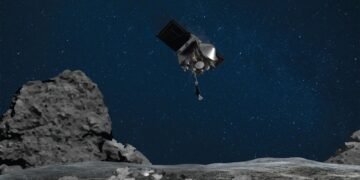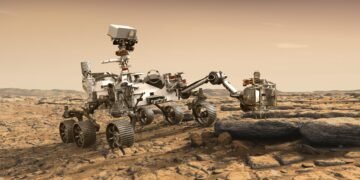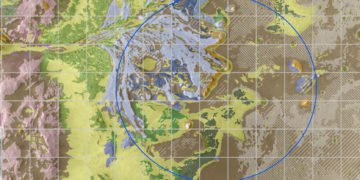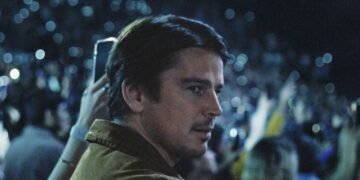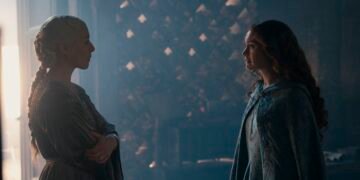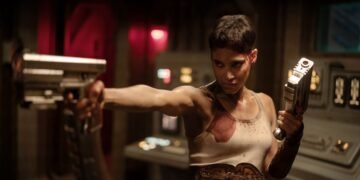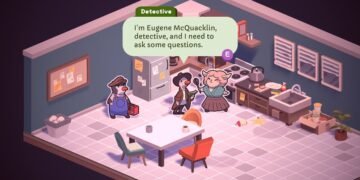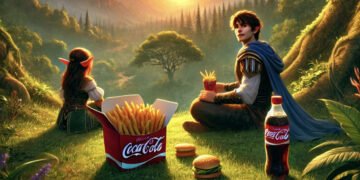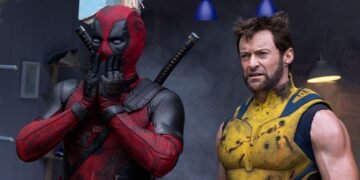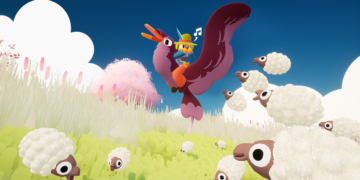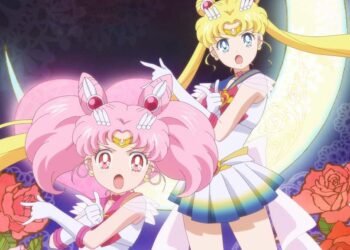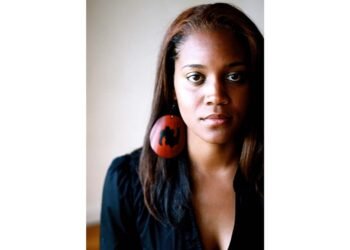James’ most notable role is that of Tobias “Four” Eaton in the Divergent series alongside Shailene Woodley, and the English actor is now reflecting on that experience including the scrapped fourth film that would’ve concluded the story.
“It was three books, and I don’t think I saw it as more than that in terms of films,” James shares. “There were some powerful elements to those films, but they also have their own weaknesses in terms of addressing a mass audience and everything that comes with that. That’s dangerous territory in some ways because, obviously, the broader the message, the less specific you are with the story and the vision you’re trying to tell. So, I still think it was good to do them, and that the glass was half full rather than half empty.”
In a recent conversation with THR, James elaborates on the immersive experience of shooting Archive, the many benefits of the human-operated robots on set and not being able to complete the Divergent series’ concluding fourth film. Archive writer-director, Gavin Rothery, also adds his thoughts on the development of the film’s practical robots and how his design work on Duncan Jones’ Moon paved the way for his directorial debut.
George from Archive was well ahead of us all by isolating himself with non-human entities and communicating via screens. Have you felt a bit like George these last few months?
Theo James: (Laughs.) Yes, in some ways. My sense of reality is slowly diminishing with the inability to do the regular things that one is able to do normally. But yeah, there’s a strange sense of isolation and pent-up nature which I think George has and I’m sharing at the moment. Like the rest of the world, I’m waiting for things to get better and to change, but it doesn’t seem to be happening in the way that we had predicted it.
Has lockdown given you a chance to pick up your music again?
James: Yeah, it has. I have a piano in the house, and my wife wants to kill me because of the amount of noise I’m making. I don’t know how good it is, but yeah, it’s allowed me to do those things that you think you don’t have time for normally during the day.
So I read that you’re the youngest of five children. Was this a situation where you started performing in order to get the attention of everybody else in the family?
James: Yeah, I think so. We had a madhouse of five kids, all our friends and fifty animals. You try and find your identity in some way through the others around you. And I think I found it to be an element of performance. It started with music, and then it ended up being acting.
So what got the ball rolling as far as your involvement with Archive?
James: Gavin has had this story for a long time, and he developed the story with Philip Herd, another producer, after they did a short together. And about three and a half years ago, they came to see me in a play I was doing in London. Then I read it, we started chatting about it and it went from there. It’s been a bit of a labor of love, and it’s taken a while to come to fruition. There were various initial derivations of it. At one point, we were going to shoot in Belgium. There were different iterations and forms of people involved, but the final one that shot in Budapest with the amazing Stacy Martin was the best iteration of it. It evolved week by week, really, from the script to the look. One thing that really impressed me when I initially was interested in doing it was that Gavin had built these robots visually. Three or four years ago, he had already rendered pictures of what they looked like in the movie. He was very specific with what he wanted to do, down to the finest detail, and that was really impressive to me. We didn’t end up using it, but one thing that stuck out in our conversation was a mug he had with the Archive insignia on it. He had been using it for the past year to make it feel lived-in like a cup of tea or coffee that George would use every day. It would be worn, battered and broken. So he was thinking in that minute detail, and that was part of what drew me to his idea and his vision.
[Writer’s note: At this point in the interview, I’ve included additional insight from writer-director Gavin Rothery.]
Yes, the robots were really well done. While I assumed someone was inside the J1 and J2 models, I kept questioning myself since they were so realistic.
James: Yeah, there was someone inside both of them. A big reference for Gavin was Douglas Trumbull’s Silent Running, a Bruce Dern movie from the ‘70s. It’s about a guy and his robots, essentially. I don’t think there were people inside them because they were more like remote controls, but Gavin wanted to make the robots feel as real and lived-in as possible. Metropolis was also a big reference for him. The idea of having someone in them was always a big part of the way he wanted to realize his movie. It was beautiful as an actor as well because you’re interacting with a human being essentially. They’re restricted by the movement of the suits, and at times, it would be pretty tough for those guys inside the suits because they were heavy and boiling hot. But they were able to react like an actor which was kind of amazing. As I’m sure you know, doing it with green screen can be tricky and a little bit soulless in a way. So it was a really good way to work.
Gavin Rothery: I always wanted to do practical robots as much as possible in Archive, because when I look back as a science fiction fan, the robots and droids that I love the most are always being driven by a human performance. I designed the robots alongside Calum Alexander Watt. I come from a concept art background, and he is a master character artist, so we teamed up. I did J1 and most of J2. Calum did J3 and a pass over J2’s head. It all came together quite quickly and as I tend to concept in 3D, I had designed the characters in full virtual space with a human mannequin inside them, so I could be comfortable that not too much would be lost in translation when the finished suit was made. The actual costumes were built with a heavy reliance on 3D printing. My concept models were segmented into parts, printed out and put back together again with a few tweaks here and there to get the articulation. I was really happy with the way that they came to screen with minimal changes. Although the 3D printing isn’t the toughest of materials, it got us through the shoot. My biggest worry was that one of the actors might fall over whilst they were wearing one of the suits. That would have been really bad as we only had one of each (actor and suit). I had the designs done a couple of years before we went into pre-production, so I could comfortably focus on other things when we got into the pre-shoot crunch. The 3D VFX work was all done very quickly towards the end of 2019, and we didn’t have the luxury of testing things out really; we just had to hold our breath and go for it. There were only a handful of CG shots of J2, and none of J1, but we did comprehensive photogrammetry coverage of the suits whilst we were shooting, so the digi-doubles came together without any real problems. All the VFX work had been carefully considered before it was started, so it wasn’t particularly risky in the conceptual sense. We just had to focus to hit the volume on the date to deliver the film.
I don’t know what your budget is, but the film looks better (and more expensive) than several recent sci-fi movies that likely had a bigger budget. Would the budget have gone up considerably if digital robots were required?
Rothery: Yes, the budget would have gone up a lot — easily outside of our scope. Our budget for the film was actually really tiny. Our shooting budget was on par with what we had for Moon. The VFX resource was bigger than we had for Moon, but still incredibly tight. We really had to pick our battles, and there was no wastage. It’s all on-screen. The whole thing is me expanding on what I achieved with Moon. I was just following my nose. I think this sort of thing helps when it all comes from the same mind. I knew what I wanted this film to look like whilst I was writing it, so for it to get all the way through the filmmaking process without things changing at all was incredibly satisfying.
The J1 and J2 robots definitely felt like genuine characters. As far as the back-and-forth dialogue with J2 on set, was an actor performing J2’s lines out of frame?
James: So Stacy did the overdubs for J2 as well. That’s her character’s voice, but it hasn’t been realized at that point. It’s her speaking because the idea is that it’s an earlier iteration of J3. But the person inside the suit would speak the lines, and in post, Stacy’s lines were overdubbed so you’d have that semblance of Stacy’s character in that J2 model.
And in the scenes where you’re speaking with the legless J3 prototype, how was that achieved?
James: Stacy had green leggings so they could paint her legs out, and they built a rubber suit which she spent hours putting on every morning. Pieces of the suit were put on, and in post, any little blemishes were taken out to make it more robotic and smooth. Essentially, she was in a rubber outfit, but it was also really compelling because she pretty much looked like that when she was performing.
Since this was Gavin’s directorial debut, could you liken his passion for the material to a band making their first record, something they’ve spent their whole lives writing, in essence?
James: Yeah, I think you could. His attention to detail was really useful — like the song used when they danced together — to every facet of Geoge’s day-to-day mechanisms like his outfit, shoes and watch functionality. It all felt really real. I’ve done films in the past where there was a semblance of sci-fi but it was added on. It wasn’t dynamic in any way. But here, every piece of costume and furniture had a real place in his vision. He had specificity which made it really, really interesting, and sometimes, that can be constricting, but he was open in terms of emotionality and character. In terms of detail, he was very on it, and I really love that. The more detail you have as an actor, the more anchors you have to ground the performance in some semblance of reality. Taking on the idea of a robot builder and engineer in the future in Japan, you’re trying to find the links between yourself and the character, and sometimes, it’s harder than it would normally be with other characters. So the more grounding you have and the more detail you have, the better.
You had a great DP in Laurie Rose. When you know you’ve got someone like that overseeing camera and lighting, does that offer quite a bit of confidence to the set whether you realize it or not?
James: 100 percent, yeah. Pairing a first-time feature director with a really confident DP is always the best way. Obviously, you’ve gotta test their chemistry because they’ve gotta get on, share the same vision and have confidence in one another. Yeah, I think it’s important to pair an experienced DP with a first-time feature director — not that Gavin needed it exactly — but it helps inevitably as you can imagine. It helps bring general confidence to the set. Laurie’s aesthetic was also very aligned with Gavin’s. As you know from Gavin’s design work on Moon, he loves that retro sci-fi of Alien and those kind of archetypal movies that we love from that period. And Laurie was definitely in the same boat in terms of how to realize that. Also, Laurie shoots stuff with a real warmth in terms of color and the movement of camera. For a movie about robots, or non-humans, essentially, with mainly only two actors in it, myself and Stacy, it’s important that you can bring warmth because you need as much humanity in a story like this as possible.
Rothery: Laurie Rose is a wizard, and I love working with that man. He brings a lovely demeanor to the set and has such a personable way about him. He makes everything seem possible. We had minimal resources on Archive, and he had a minimal grip kit to work with. We had a Steadicam for a few days, a dolly and some track, a kit of six or seven lenses and some LED light panels. Apart from a few spot LEDs, the monitor screens and a single 10K to represent the sun, that was pretty much all we had to work with. We didn’t have enough lights to light the whole set, so every time we moved, we had to take the lights with us. Laurie pulled off some amazingly complicated setups with the small amount of kit that he had. I’m particularly fond of the alarm sequences and the transitions in and out of them — especially the part where George (James) is moving down the corridor with the cricket bat and he tells the house to kill the alarm. The lighting at that moment is just so perfect. And the number he did on the futuristic truck stop restaurant was just incredible. I’m telling you, the man’s a stone-cold genius. And every shot was a conversation. We spoke constantly about what was coming up next, and once the machine got moving, I felt we developed a fantastic rapport. He’s a fantastic chap to collaborate with.
As mentioned, Gavin worked on Duncan Jones’ Moon as a visual effects supervisor, graphic designer and stunt double for Sam Rockwell. Since I haven’t had the chance to go through each film with a fine-tooth comb, are there any Moon Easter eggs that were included for discovery via repeat viewings?
James: He did, yeah, but I’ll let Gavin tell you. He did that with relish, so he for sure puts lots of Easter eggs in there.
Rothery: Check out the patch on George’s (James) left shoulder, and then check out Sam’s (Rockwell) left shoulder patch in Moon. Also, J1 and J2 are GERTY’s cousins. They go to the Moon to hang out with him during the summer holidays. (Laughs.) It’s a different Sam each time, but they don’t seem to mind…
When a sci-fi film is set in the future, a cool car is often a prerequisite, and you guys certainly achieved that here.
James: Yeah, there’s that detail again. I’m fascinated with the era of angular cars. The ‘80s sports car had a very different look to what it is now. Now when we look at expensive cars, they mostly have smooth lines. This was a Lotus Esprit. I think it was a ‘78 or an ‘82; I can’t remember exactly. It’s that Blade Runner angularity that is really specific and quite unique. Gavin wanted to build the car, but in terms of budget, you don’t win every battle. But what we found was this great Lotus Esprit, which they morphed until it felt like it was unique and very much of this specific world.
You’ve been doing more voice work of late (e.g., Castlevania, The Dark Crystal: Age of Resistance). Do you find yourself performing those roles exactly as you would in live action, or do you add a little more emotion and infection to your voice than usual?
James: It’s interesting that you say that because that was a learning curve for me. When I started doing voice work, I approached it as I would in live-action, but in actuality, you need to add about 15 percent more. You’ve gotta give more inflection than you might necessarily do in reality. You just need a little more color and vocal data, as it were. So it was definitely a learning curve with me, and it was a little bit different. Each time I do it, I kind of feel like I’ve shitted it, but then you learn something new.
As far as your franchise work via the Divergent series, is it a glass-half-full situation or a glass-half-empty situation? In other words, is it more, “Hey, at least we got to make three huge movies,” or is it mostly, “Man, it’s a bummer we didn’t get to conclude the story”?
James: I think the former. It was three books, and I don’t think I saw it as more than that in terms of films. It was an interesting moment in time. There were some powerful elements to those films, but they also have their own weaknesses in terms of addressing a mass audience and everything that comes with that. That’s dangerous territory in some ways because, obviously, the broader the message, the less specific you are with the story and the vision you’re trying to tell. So, I still think it was good to do them, and that the glass was half full rather than half empty.
***
Archive is now available on Digital HD and VOD from Vertical Entertainment.

